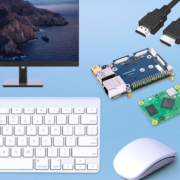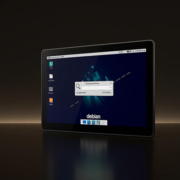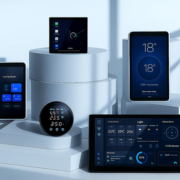What is the Difference Between SoC and Embedded Board?
In the world of embedded systems and smart devices, terms like System on Chip (SoC) and Embedded Board often appear side by side. While they are closely related and sometimes used together, they represent very different concepts in hardware design. Understanding the difference between them is crucial for engineers, developers, and businesses designing smart home control panels, IoT devices, and industrial automation systems.
What is an SoC (System on Chip)?
A System on Chip (SoC) is an integrated circuit that consolidates all—or most—of the components needed for a functional computer system onto a single chip. This typically includes:
- CPU (Central Processing Unit)
- GPU (Graphics Processing Unit)
- Memory controllers
- Input/Output interfaces (e.g., USB, UART, SPI, I2C)
- Storage interfaces (eMMC, NAND)
- Network controllers (Wi-Fi, Bluetooth, Ethernet)
- Sometimes even AI accelerators or DSPs
Key Features of SoC:
- Highly integrated: Combines multiple components on one chip.
- Power-efficient: Consumes less power, ideal for battery-powered devices.
- Compact: Reduces the size of the overall system.
- Cost-effective: Lowers manufacturing costs in high volumes.
SoCs are commonly used in smartphones, tablets, and smart home control panels like the ones offered by Portworld.
What is an Embedded Board?
An Embedded Board is a physical hardware platform—typically a printed circuit board (PCB)—that hosts various components including (but not limited to) an SoC or processor. It provides a development-ready platform for engineers to integrate into larger systems.
Embedded Boards Typically Include:
- SoC or microcontroller
- RAM and storage
- Power management circuitry
- Connectors (HDMI, USB, GPIO, etc.)
- Expansion ports or modules (Wi-Fi, Bluetooth, Zigbee, etc.)
- Operating system support (Linux, Android, RTOS)
Common Types of Embedded Boards:
- Single Board Computers (SBC) like Raspberry Pi
- System on Module (SoM) carrier boards
- Custom embedded boards for industrial and consumer applications
Key Differences Between SoC and Embedded Board
| Aspect | SoC | Embedded Board |
|---|---|---|
| Definition | A microchip that integrates all system components | A full hardware platform including SoC and peripheral circuitry |
| Functionality | Provides raw processing and I/O capabilities | Offers a ready-to-use platform for development or deployment |
| Integration Level | Extremely high (all-in-one chip) | Medium – integrates multiple chips and modules |
| Customization | Requires PCB design to use | Available in ready-to-use or semi-custom formats |
| Usage | Found inside embedded boards | Used as the main control board in devices |
| Examples | Qualcomm Snapdragon, Allwinner, Rockchip | Raspberry Pi, Portworld Android Embedded Boards |
Real-World Application: Smart Home Control Panels
When building a smart home control panel, companies often choose:
- SoC for core processing (e.g., Rockchip RK3568 or Allwinner A133)
- Embedded board to integrate touchscreens, interfaces, power modules, and wireless connectivity
Portworld, for instance, provides Android-based smart home control panels built on SoCs but delivered as fully functional embedded boards ready for OEM/ODM customization.
These boards are already integrated with:
- Touch displays (4″, 5″, and more)
- Zigbee or Wi-Fi modules
- Android OS with Alexa or Tuya support
- Power-efficient design suitable for wall mounting
Which One Do You Need?
If you are designing a custom product from scratch, an SoC gives you low-level control and hardware flexibility—but you’ll need experience in PCB layout and firmware development.
If you’re building a commercial product or prototype, an embedded board is the better choice. It allows for faster time to market and reduces development complexity.
While a System on Chip is the brain of a device, an Embedded Board is the body that holds everything together. The SoC provides the computational power, but the embedded board makes it usable by combining essential components and interfaces.
Whether you’re building a smart home control panel, IoT hub, or industrial device, understanding the difference between SoC and embedded boards helps you make better design decisions.










